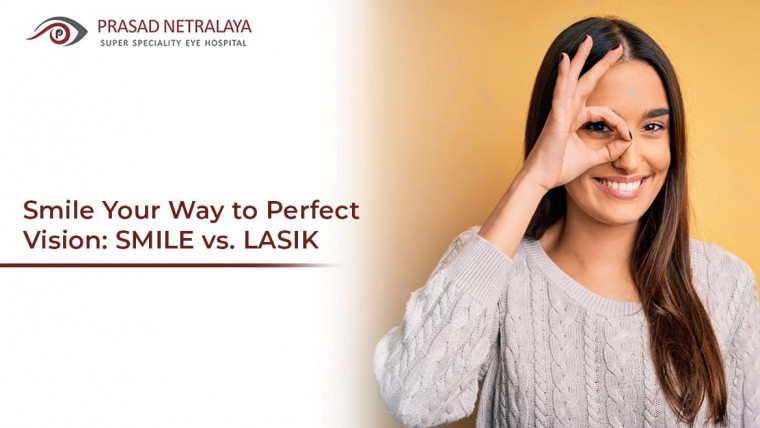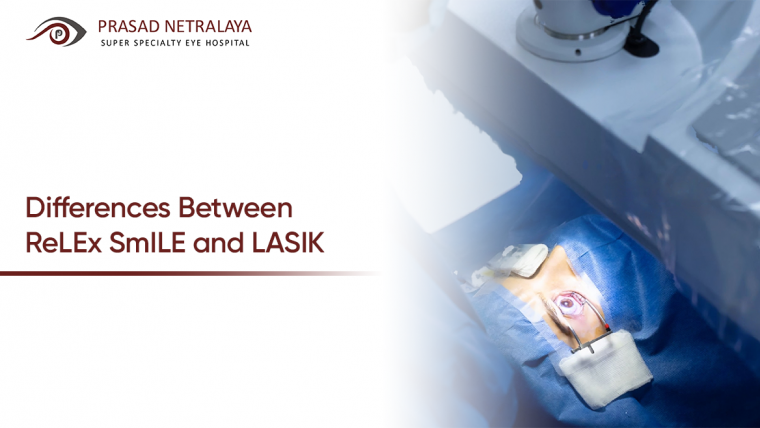Modern medicine is truly a marvel, isn’t it? From medical thermometers to pacemakers that literally keep a heart beating, to the fancy brain scanners, we’ve come a long, long way.
Today, we have spectacles and contact lenses to deal with myopia or hypermetropia (farsightedness). These are temporary, corrective options for an existing problem. But what if you want a permanent solution?
In the last few years, LASIK eye surgery has been the gold standard method for correcting refractive errors of your eye lenses and restoring clarity to your vision. But the advancements have kept going. The last couple of years has seen the emergence of an easier, safer alternative to laser eye or LASIK surgery – the ReLEx SMILE treatment.
Table of Contents
What is ReLEx SMILE eye surgery?
Small Incision Lenticule Extraction, a.k.a. SMILE is the first minimally invasive Laser Vision Correction procedure. It is designed to treat a multitude of refractive errors such as myopia, hyperopia and astigmatism.
When is the ReLEx SMILE procedure recommended?
The ReLEx SMILE procedure is mostly performed in cases of myopia, or nearsightedness, but it can also treat deformities like farsightedness and astigmatism.
This technique can correct deformities of up to -10 diopters (unit to measure lens power) for nearsightedness.
ReLEx SMILE is a minimally invasive bladeless procedure. It is recommended in cases where the patient seeks relief from corrective apparatus like glasses or contact lenses and prefers a more advanced method of treatment.
Some people are deemed unfit for traditional laser surgery treatment due to dry eyes, thin corneas, or an intolerance to contact lenses. These people can look at the SMILE procedure as an alternative.
How is it performed?
The ReLEx SMILE is performed in 3 steps:
- Lenticule and Incision
After administering anaesthetic drops to numb the eyes for painless treatment, a tiny incision is created on the cornea, about 2mm wide, leaving the upper corneal tissue layers virtually untouched.
Then, the VisuMax (the only laser capable of performing this procedure), takes about 30 seconds to create a precise refractive lenticule, i.e. a thin lens-shaped corneal tissue within the inner cornea layers.
- Removal of Lenticule
The lenticule is removed through the incision with minimal disruption to the biomechanics of the cornea. The refractive lenticule is then extracted via a small incision. The structure of the cornea remains intact and stable.
- Rehabilitation
The removal of the lenticule alters the cornea’s shape, resulting in the appropriate refractive correction. The refractive lenticule’s removal alters the way light enters the eye, allowing you to see clearly once more. The micro-incision heals on its own.
ReLEx SMILE vs LASIK
| ReLEx SMILE | Subject | LASIK |
| 2 to 4mm incision | Size of opening | Close to 20mm incision required. |
| No flap folding is necessary for this minimally invasive procedure. | Flap folding | Involves cutting a flap and folding it back to remove corneal tissue. |
| SMILE keeps the cornea stable and the flow of tears undisturbed. Suitable for dry eyes. | Tear generation | LASIK tends to generate more tears during the procedure. It is not suitable for naturally dry eyes. |
| Latest method of surgery called Femtosecond LASER | Method of surgery | Traditional method of surgeryEXCIMER LASER |
| People with a power of up to -10 diopters can be treated. | Surgery qualification | People with only up to -8 diopters can be treated. |
| The incisions take a day or two to heal. | Recovery time | Because of flaps, it takes about 15-20 days to completely heal. |
Limitations of ReLEx SMILE procedure:
- SMILE can only correct myopia to a high standard; hypermetropia is best treated with LASIK or PRK (Photorefractive keratectomy).
- ReLEx SMILE is also not fully suitable for Higher-Order Aberrations (HOAs) affecting night vision.
Possible side-effects of ReLEx SMILE
It is essential to note that the following side-effects are only observed in extreme cases in a minority of patients.
- Night vision: With any laser treatment, there runs the risk of diminishing night vision due to high impact, and may lead to glare from bright lights and possible halos.
- Debris: The removal of surface tissue from the cornea opens up the possibility of debris formation. In most cases, the debris should be minimal and can be flushed out, but in extreme cases, it may involve follow-ups and add days to your recovery time.
- Infection: Any surgery runs the risk of infection. While the odds are quite low, one must be on the lookout for signs like redness, itching, pain, etc. that might indicate a developing infection.
- Dry eyes: While very rare among SMILE procedures, dry eyes remain a relatively common affliction for any laser treatment, especially ones with a pre-existing issue. Lubricating drops and follow-ups are recommended for anyone suffering from this issue.
Want to free yourselves from the shackles of your spectacles? Are you tired of keeping track and caring for your tiny contact lenses? Reach out to us at Prasad Netralaya, eye specialists in Mangalore, Udupi, Sullia, and Thirthahalli for the most trusted eye specialists. Our highly experienced experts are on-hand to make sure you get your vision back! To know more, call us at +91 9513596565 to book an appointment. You can also book a teleconsultation here.
Dr. Vikram Jain, M.S. had his medical training (MBBS) from Kasturba Medical College, Mangalore, India. He did his master’s in Ophthalmic surgery from Kasturba Medical College, Manipal. He currently manages the Glaucoma department of Prasad Netralaya hospital.



